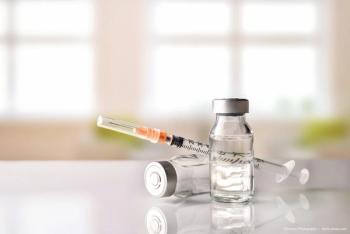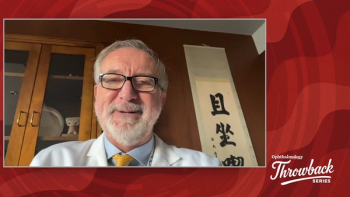
- Ophthalmology Times: November 15, 2020
- Volume 45
- Issue 19
Teleretinal screening fails to do double duty for detecting glaucoma, cataracts
Programs use detection and treatment to ease burden of eye disease.
Utilization of a diabetic eye disease teleretinal screening program to detect
Instead, clinical examination remains the primary method of screening for the latter pathologies, concluded a team of investigators from Emory University in Atlanta, Georgia.
In a retrospective analysis of data collected from patients with type 1 or type 2 diabetes who had been screened via the Grady Health System’s teleretinal screening program, the investigators found only fair agreement between the results of screening based on nonmydriatic fundus camera images and clinical exam in regard to glaucoma diagnosis, slight agreement for detecting cataract, and slight agreement for detecting both pathologies combined.
Although the specificity and negative predictive value for the teleretinal screening program were both high for detecting glaucoma, cataract, and both together, its sensitivity and positive predictive value were low for all outcomes, according to investigators.
Related:
The research was presented at the 2020 Association for Research in Vision and Ophthalmology meeting by Omar I. Ali, BS, an MPH candidate at Emory University’s Rollins School of Public Health and a medical student at Baylor College of Medicine in Houston, Texas.
Yousuf M. Khalifa, MD, an associate professor of ophthalmology at Emory University School of Medicine, is the senior investigator in the study.
Reducing the burden
“Large teleretinal screening programs offer the potential to reduce the burden of eye disease through early detection and treatment,” Ali pointed out. “Such screening systems, however, should be both highly sensitive and highly specific when compared to the gold standard, which in our study was clinical examination.”
Ali also pointed out that additional research must be done on the best measures for accurate detection of glaucoma, because current telescreening programs differ on which aspects to give credence to, reflecting the general difficulty in diagnosing glaucoma clinically.
“In addition, further research is needed on the usefulness, cost-effectiveness, and accuracy of this type of screening system to better understand its role in a large healthcare system,” he said.
Related:
Detecting secondary outcomes
Although the use of teleretinal screening programs to detect diabetic retinopathy and reduce barriers to access has spread across many communities and the benefits have been well reported, there is less investigation of utilizing the screening program to detect secondary outcomes, such as cataract or glaucoma.
According to Ali,the retrospective study was undertaken by investigators against that background.
Patients included in the study were identified from among those screened using a nonmydriatic camera via the Grady teleretinal screening program between January and October 2018.
Ali explained that the eligible patients had to meet the threshold for the primary outcome of having a positive screen for proliferative diabetic retinopathy (PDR) and/or
They also had to show evidence of cataract and/or glaucoma on the screening imaging, and have been seen in the clinic for follow-up of their primary outcome.
During the study period, a total of 7099 patients were screened through the teleretinal screening program, of which 394 screened positive for PDR and/or DME. Of the 394 patients, 299 were seen in clinic for follow-up, but only 16 of the 299 patients examined had glaucoma (n = 13) or cataract (n = 3) on screening.
Related:
Agreement between the findings from the screening and clinical exam was calculated using K; values were 0.23 for glaucoma, 0.01 for presence of cataract, and 0.04 for the combined endpoint. The sensitivity of teleretinal screening for detecting any of the secondary outcomes ranged from 4.55% to 16.67%, and it had a positive predictive value of 50% for all three.
According to Ali, its specialty was greater than 98% and negative predictive value ranged from 71% to almost 95%.
Conclusion
Ali said it is likely that the true sensitivity of the current teleretinal system is much higher, especially given the literature report of a teleglaucoma program having high specificity and sensitivity.
The investigators were pleased with the results of their research, butalso acknowledged the limitations of the study. Further research is needed, Ali explained.
“Our study was limited, however, due to its sample size, loss to follow up, and requirement for patients having to screen positive for both the primary outcome, PDR and/or DME, and the secondary outcome of glaucoma or cataract,” Ali concluded. “Further studies with larger sample sizes and better follow-up are needed to better understand the role of teleretinal screening for secondary outcomes.”
--
Omar I. Ali, BS
e:[email protected]
Ali has no relevant financial relationships to disclose.
Articles in this issue
almost 5 years ago
Evaluating scleral biomechanics to pinpoint root of accommodationalmost 5 years ago
FA implant outperforms anti-VEGF in DR patients lost to follow-upalmost 5 years ago
Challenges to topical drop adherence after cataract surgeryalmost 5 years ago
Gene therapy surgical pearls for successful outcomesalmost 5 years ago
Eliminating preop fasting leads to happier cataract patientsalmost 5 years ago
Pearls for drawing patients back to your practicealmost 5 years ago
Haptic flanging reduces IOL dislocations after cataract surgeryalmost 5 years ago
AMA steps up support for gender equity in medicinealmost 5 years ago
Ophthalmic practices eye private equity investorsalmost 5 years ago
Oh, the people we meetNewsletter
Don’t miss out—get Ophthalmology Times updates on the latest clinical advancements and expert interviews, straight to your inbox.



















































.png)


